The paving finish may be exquisite, the water features entrancing, but above all it’s the magic of the planting that really says Chelsea Flower Show. The designers weave the plants together, giving the impression that they have always grown that way and have not just been planted in the few days before judging.
In recent years and again this year in the main show gardens, the plantings have been described by gardening pundits as soft, with roots in the romance of an Arts and Crafts or cottage garden. In this very English style, there are many plants that are used almost as fillers within the main planting, placed to almost give the impression that they have self-seeded.
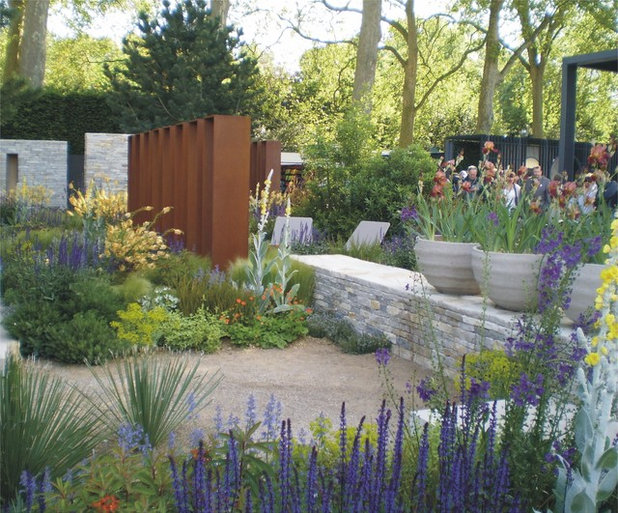
The plants listed below are taken from Chelsea planting lists and are common self-seeders in many gardens in England. Some of the plants listed are natives, such as the foxglove and cow parsley, while others, though foreign introductions, have been in British gardens for so long they are almost thought of as being native.
Note: Not everyone can allow certain plants to freely self-seed. If you live in a country or state where the plants in this ideabook are restricted or prohibited, look for similar plants that create the same feel within the planting, and are also safe to grow in your conditions and under your local environmental restrictions.
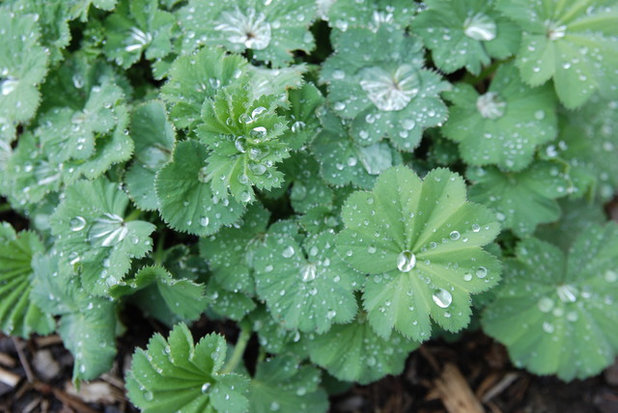
Paintbox Garden
Lady’s Mantle(
Alchemilla mollis)
Native to Southern Europe
Of all the self-seeders that we see binding the soft English plantings of many Chelsea show gardens, it is the Alchemilla that perhaps most goes unnoticed. Its velvety soft, olive green leaves form beautiful mounds of foliage. Its leaves hold drops of water after a rain, little jewels that sparkle in the sun. It is perfect planted where it softens path edges and is quite happy in both sun and partial shade.
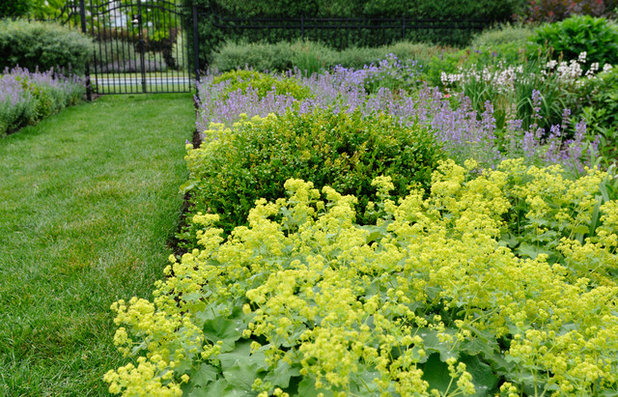
McCullough's Landscape & Nursery
Alchemilla has another bonus: its sprays of blowsy chartreuse flowers, which billow above the mounds of foliage. Some gardeners prefer to remove these, allowing the foliage to act as a foil to other flowers in the planting. It is a great self-seeder and has the perfect knack of setting itself in just the right place.
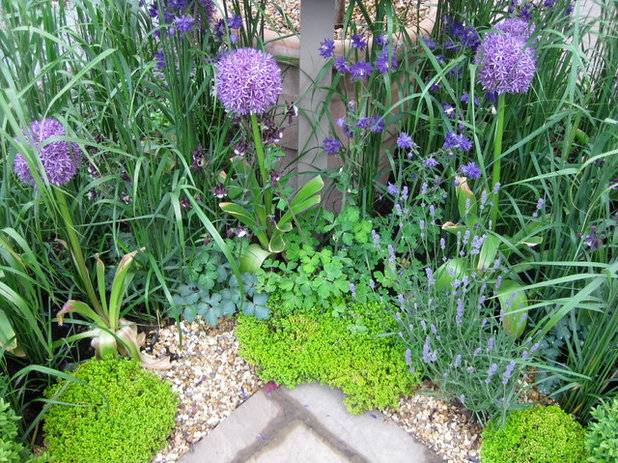
Paintbox Garden
Columbine(
Aquilegia spp)
Native to the Northern Hemisphere
Another longtime favorite fill-in plant at Chelsea, columbine tends to be used by designers for its wonderfully shaped flowers and maidenhair-like foliage.
There are many varieties, with a multitude of colors (there are even bicolored varieties), but all have the same bonnet-shaped flowers with long spurs. Aquilegia plants are very promiscuous and interbreed freely; seedlings therefore rarely resemble the parents. To keep chosen varieties pure, prevent self-seeding by deadheading shortly after flowering.
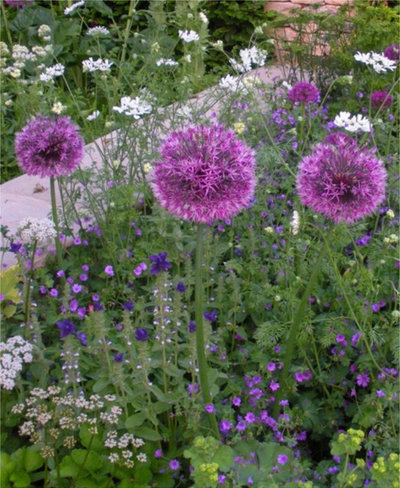
David Ward
Dutch Garlic ‘Purple Sensation’(
Allium hollandicum ‘Purple Sensation’)
This popular globe-flowered allium has been a favorite of Chelsea designers over the past 10 years; it first appeared in quantity in show gardens at the end of the last century.
It is normally grown from bulbs planted in autumn, but once you have some established and you are a vigilant weeder, it will self-seed and successfully spread.
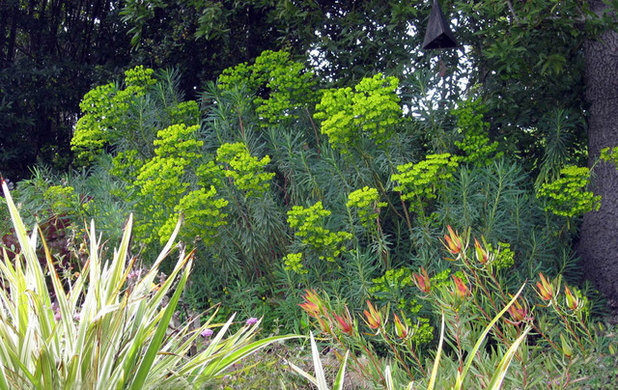
Dig Your Garden Landscape Design
Spurge(
Euphorbia characias subsp.
wulfenii)
Native to the Mediterranean
Love lime green? Then you must love Euphorbias, and designers in the past few years have really taken to the color. This year at Chelsea we had many Euphorbias used in gardens, including
E. ceratocarpa,
E. palustris and
E. amygdaloides var.
robbiae, but we are still seeing the favorite stalwart
E. wulfenii.
It’s not only the color that designers like about
E. wulfenii, but also the drama it brings to a planting with its architectural growth of bluish-green foliage topped with dome-shaped, lime-yellow flowers.
Euphorbias will self-seed in the right conditions, but will not always come true from seed.
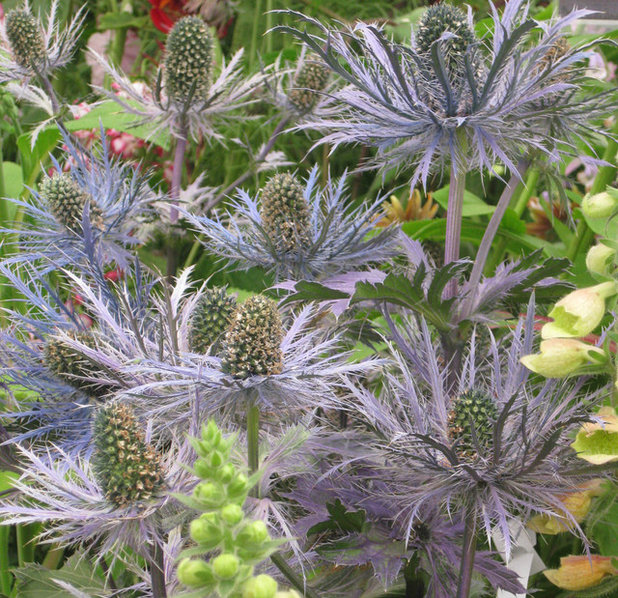
Jess Knowles
Giant Sea Holly(
Eryngium giganteum)
Native to the Caucasus
Eryngium is a superb self-seeding biennial that seldom becomes a troublesome weed. Designers love it for its large, spiny, silver-gray flower heads with almost a metallic feel, held up to 30 inches high above the foliage. It loves full sun and is drought tolerant once established.
Eryngium giganteum is also called Miss Willmott’s Ghost. The odd common name comes from the story that the famed English plantswoman used to secretly scatter seeds of the plant when visiting other peoples’ gardens.
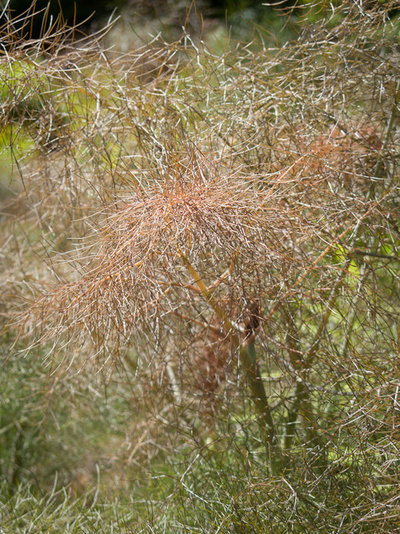
Le jardinet
Bronze FennelFoeniculum vulgare ‘Purpureum’
Can be invasive in Florida, California and Washington
The airy, feathery foliage of bronze fennel, not to be confused with the sweet or Florence fennel grown for its edible swollen bulbs, is perfect to give lightness to plantings.
The plain green of the species is not as decorative as the bronze variety, but both tend to outgrow their position, reaching up to 6 feet in height and spreading to 2 feet across. It’s better, therefore, to remove any that will unbalance your planting when they reach maturity; though of course leave some to flower and produce seed.
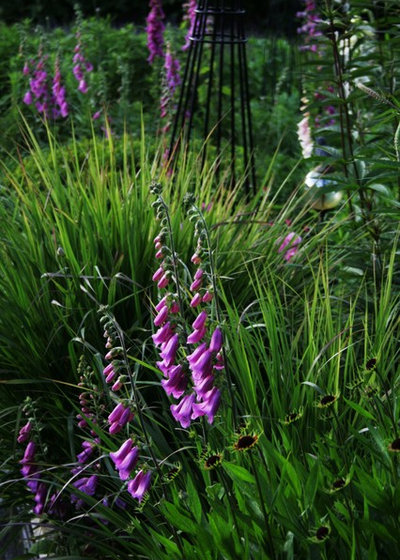
Laara Copley-Smith Garden & Landscape Design
Foxglove(
Digitalis purpurea)
Native to Western Europe
Can be invasive in parts of California
A biennial, foxglove is easy to grow from seed and will happily continue to populate your garden once you have it. As it’s happy in both sun and shade, it tends to be a favorite in show gardens, giving height and architectural structure to plantings.
Not only is the purple species a favorite of Chelsea designers, but so is
Digitalis purpurea ‘Alba’, white foxglove, as well as the myriad modern varieties that are available in a range of mainly pastel shades.
Caution: Toxic if ingested.
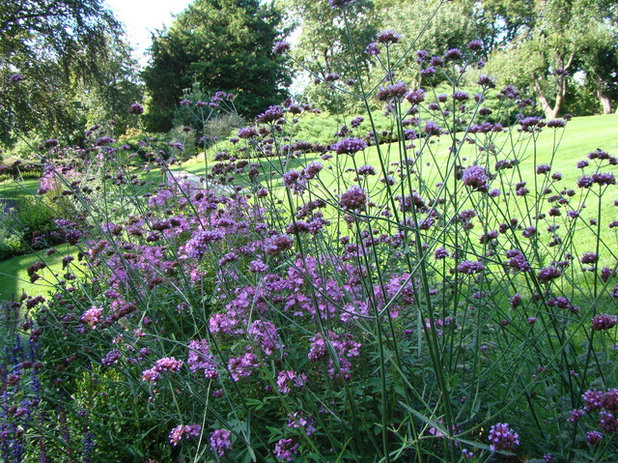
Johnsen Landscapes & Pools
Purpletop Vervain(
Verbena bonariensis)
Native to South America
Can be invasive in parts of the U.S. Southeast
Perhaps of all flowers, this verbena has become the signature plant of the Chelsea Flower Show over the past 10 years. Flowers are held high, up to 6 feet above the ground, bringing another level to any planting scheme.
Though normally grown as a perennial, it will easily self-seed and populate an area, bringing drifts of purple flowers from summer into autumn. It prefers to grow in full sun, and its roots need to be in a well-drained yet moisture-retentive soil.
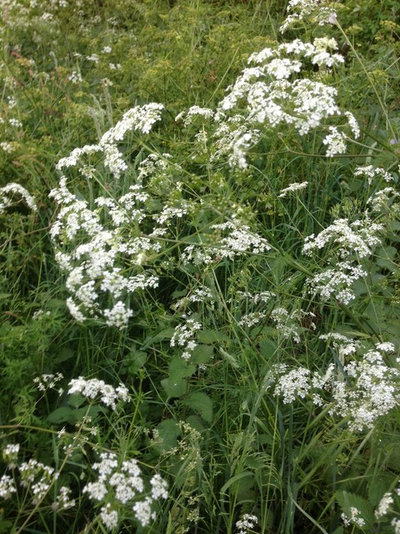 Cow Parsley
Cow Parsley or
Queen Anne’s Lace(
Anthriscus sylvestris)
Native to Europe, North Africa and Asia
Can be invasive in Washington, Michigan and Massachusetts
The lacy white flowers of cow parsley once again appeared in many of this year’s show gardens, where they threaded their way through the perennial plantings, giving a lightness to it.
Cow parsley is a U.K. native biennial that grows in profusion along the roadsides and hedges in England. Of all the self-seeders, cow parsley is very prolific, so it can be better to grow one of the cultivated varieties, such as the popular
Anthriscus sylvestris ‘Ravenswing’, another Chelsea favorite; it has brownish-purple foliage and white flowers with small pink bracts.
Information on invasiveness is from the Invasive Plant Atlas of the United States
and the Early Detection and Distribution Mapping System.Tell us: Which self-seeders do you love to see in your garden?





